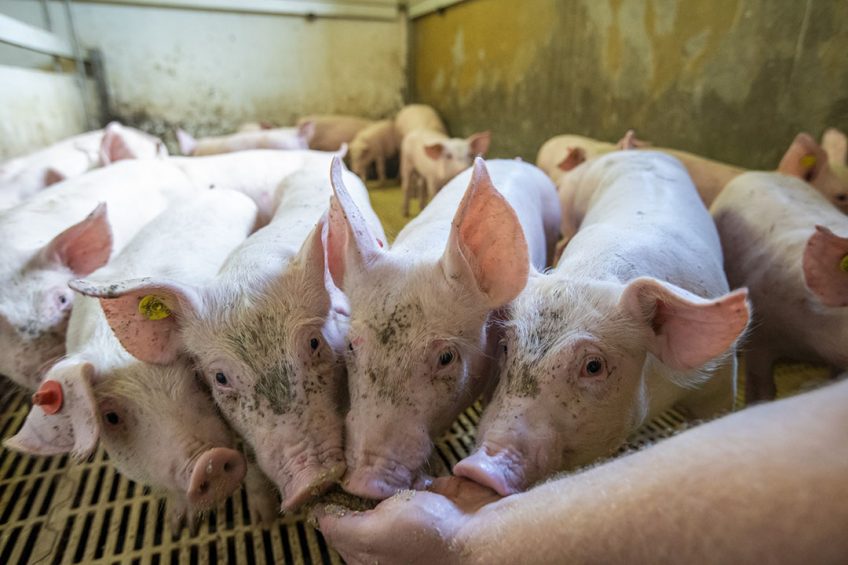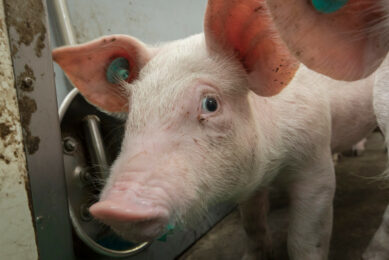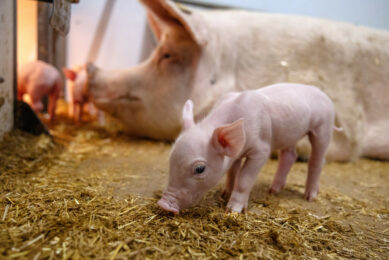A good stomach function helps piglet gut health

As from today, Pig Progress is happy to welcome a new expert columnist. From time to time, Dr Francesc Molist, R&D manager at Schothorst Feed Research, will share his views on swine nutrition. In this contribution, he explains why it is good to help piglets achieve a low stomach pH after weaning.
Weaning piglets is a stressful event with many changes, among which separation from the sow, mixing of piglets, and the switch from a liquid to a solid diet. In general, piglets have to adapt abruptly from the intake of liquid feed (sow milk) to the intake of solid feed, which results in a lower feed intake during the first days after weaning.
Low feed intake and stress
Low feed intake and stress caused by the weaning process result in damage to the intestinal wall and subsequently a compromised immune response. The piglet’s feed intake starts to increase again from around 1 week post-weaning. However, the digestive capacity of the intestine is insufficient because of the damages and the not fully developed digestive tract.
Undigested nutrients will reach the large intestine and subsequently promote the proliferation of bacteria. Especially the fermentation of undigested protein can be dangerous due to the proliferation of E. coli and the adverse effects of fermentation products (biogenic amines, NH3) further increase the permeability of the intestinal wall.
Consumption of large meals
At weaning, a combination of low HCl secretion and the consumption of large meals at infrequent intervals can result in elevated pH, often to over 5.0, and it may remain high for several days. The high acid-binding/buffering capacity of the feed (its ability to neutralise acid) helps to further raise the stomach pH. The raised stomach pH after weaning results in reduced digestion of feed which will then be fermented in the hind gut and may provoke diarrhoea. A high gastric pH will also allow pathogens to survive and allow them greater opportunity to colonise the digestive tract.

Pig Progress experts talk
To read more Pig Progress expert opinions
The gastric pH can be manipulated by the acid binding capacity (ABC) of the diet. The acid binding capacity (ABC) is defined as the ability of a feedstuff to resist a pH change. The ABC is usually measured as the milliequivalents (mEq) acid or base needed to change the pH of the feedstuff to the pH end-titration (usually pH 4). If the pH of the feedstuff is lower than the pH end-titration point, a base is used and the ABC value is negative.
Feed ingredients with a high acid binding capacity
Ingredients with a high ABC will have a stronger effect on neutralising the pH in the stomach than ingredients with a low ABC. Depending on the method of analyses, acid ingredients (and also acids by itself) can have a negative ABC, and will have a stronger effect on decreasing the stomach pH versus ingredients with a positive ABC. Taking the ABC into account when formulating diets, can help choosing ingredients and additives that will not have a great neutralising effect on the stomach pH, as can be seen in Figure 1.
The ABC-4 at dietary level can be manipulated by different factors, such as the crude protein level of the diet or the protein sources; the mineral sources and levels; or the addition of organic acids in post-weaning diets. Moreover the physicochemical characteristics of the diet can also influence the stomach retention and therefore also have an effect on reducing the ABC-4 of the diet.
A low stomach pH stops pathogens
Based on research conducted at Schothorst Feed Research (SFR) we can conclude that immediately post-weaning the ABC-4 should be lower than 250-300 meq/kg. This will result in a low stomach pH, which will function as a natural barrier lowering the chance for pathogens to pass the stomach and to reach the intestine.
Also, a lower stomach pH has a positive effect on the protein digestion. And finally, a low stomach pH reduces the rate of emptying of the stomach, which also has a positive effect on the diet digestibility. Taking the ABC into account when formulating diets can help choosing ingredients and additives that will not have a great buffering effect on the stomach pH.











